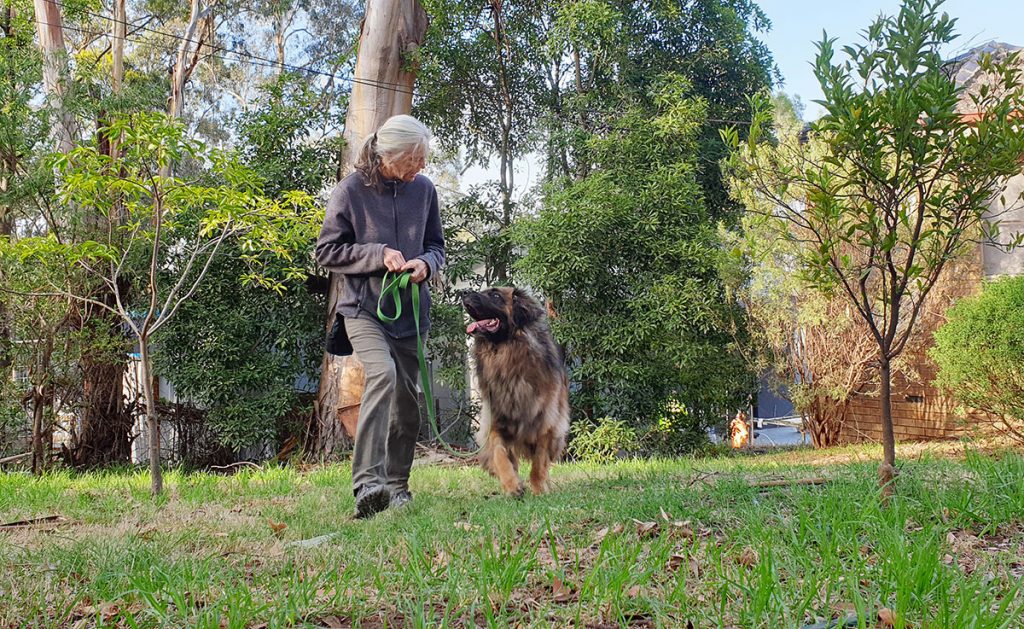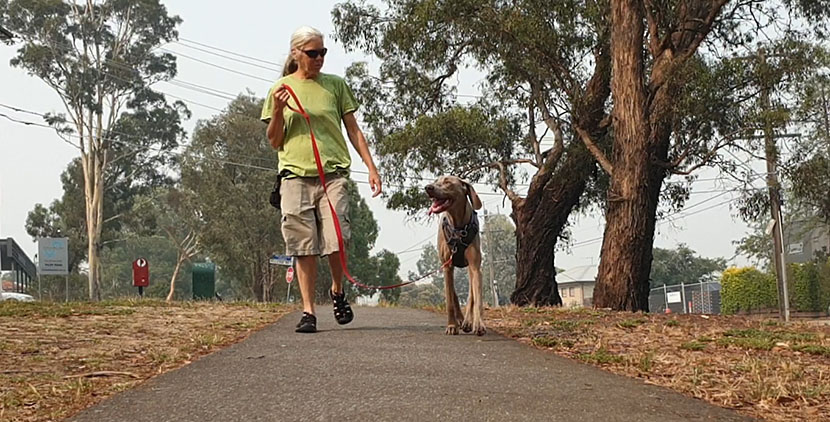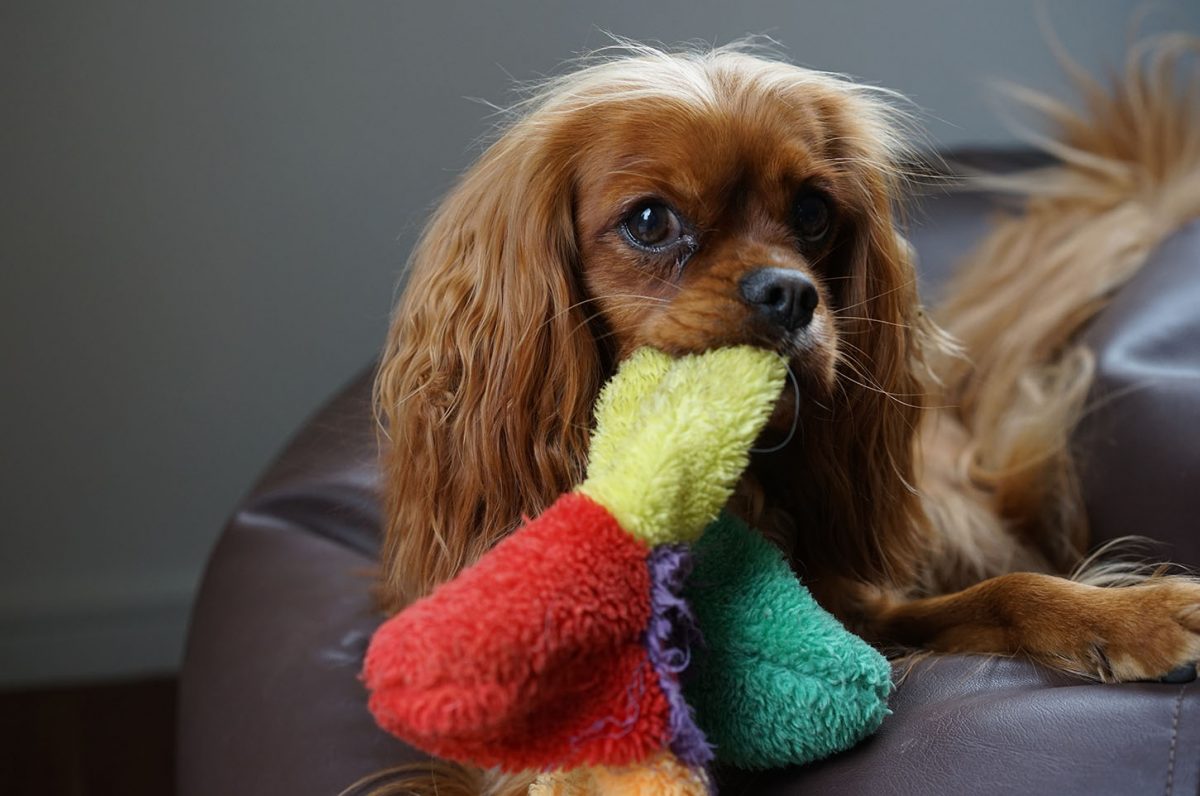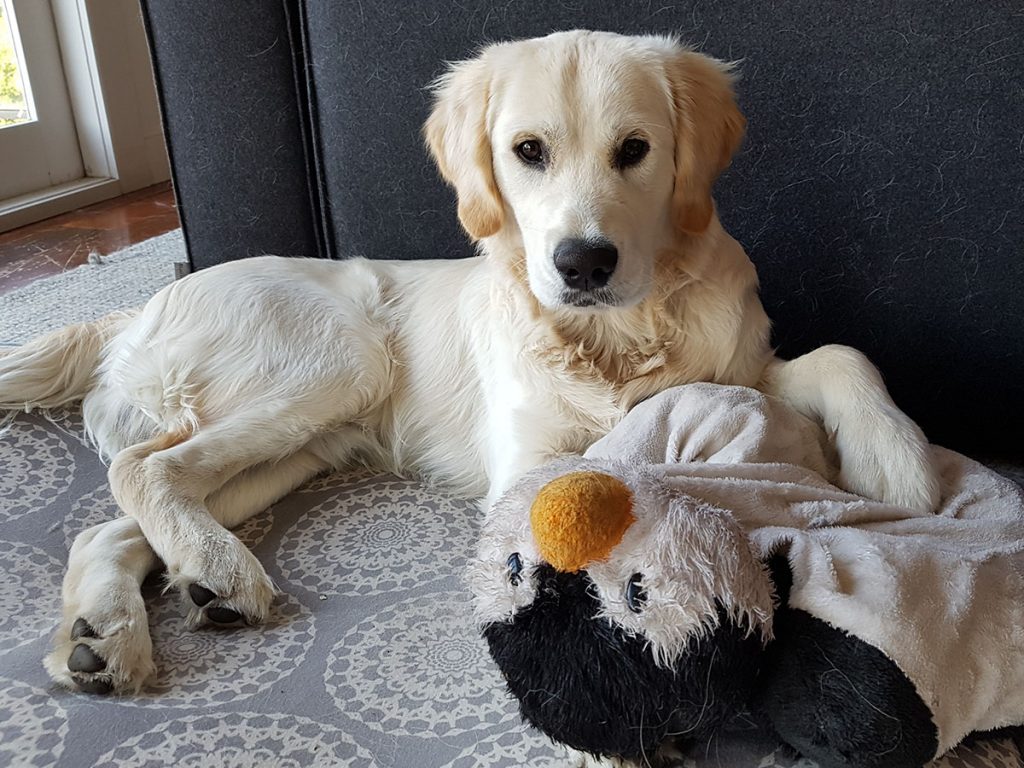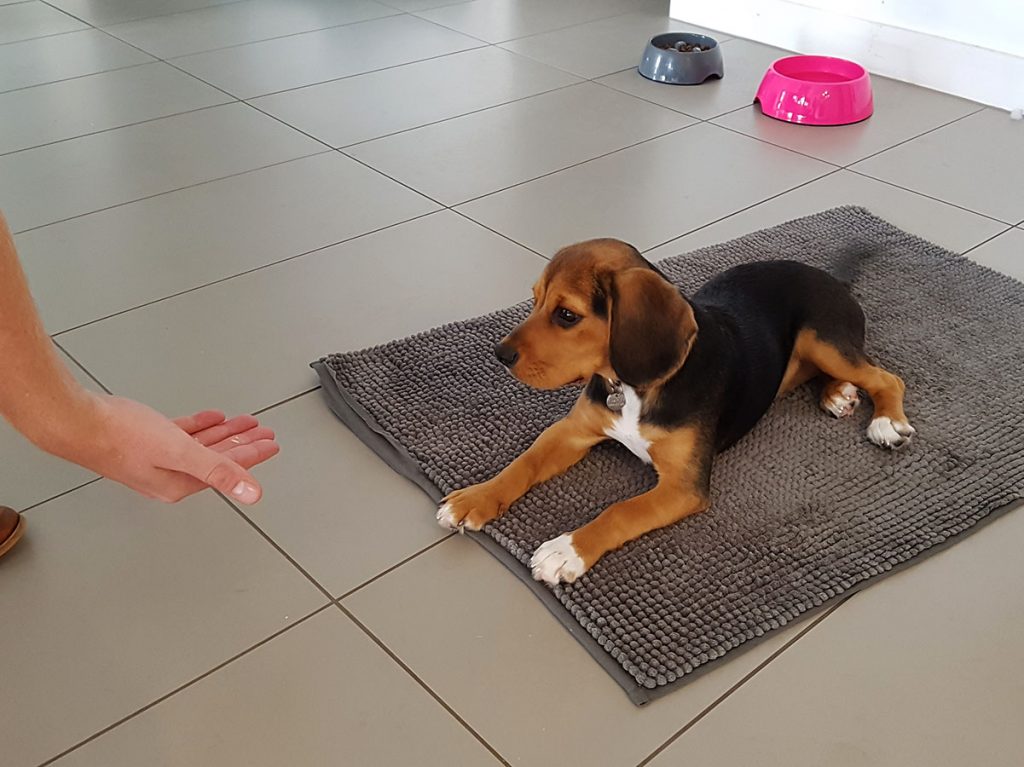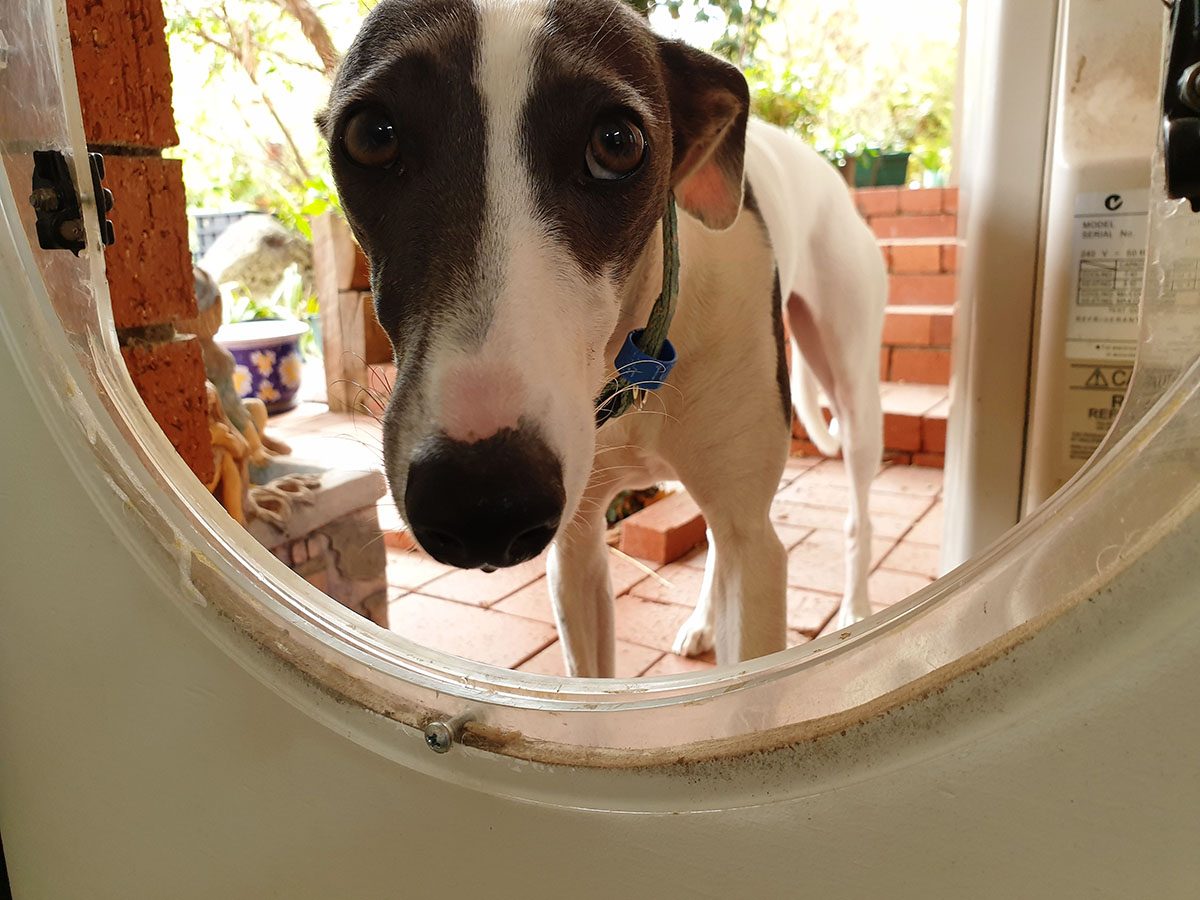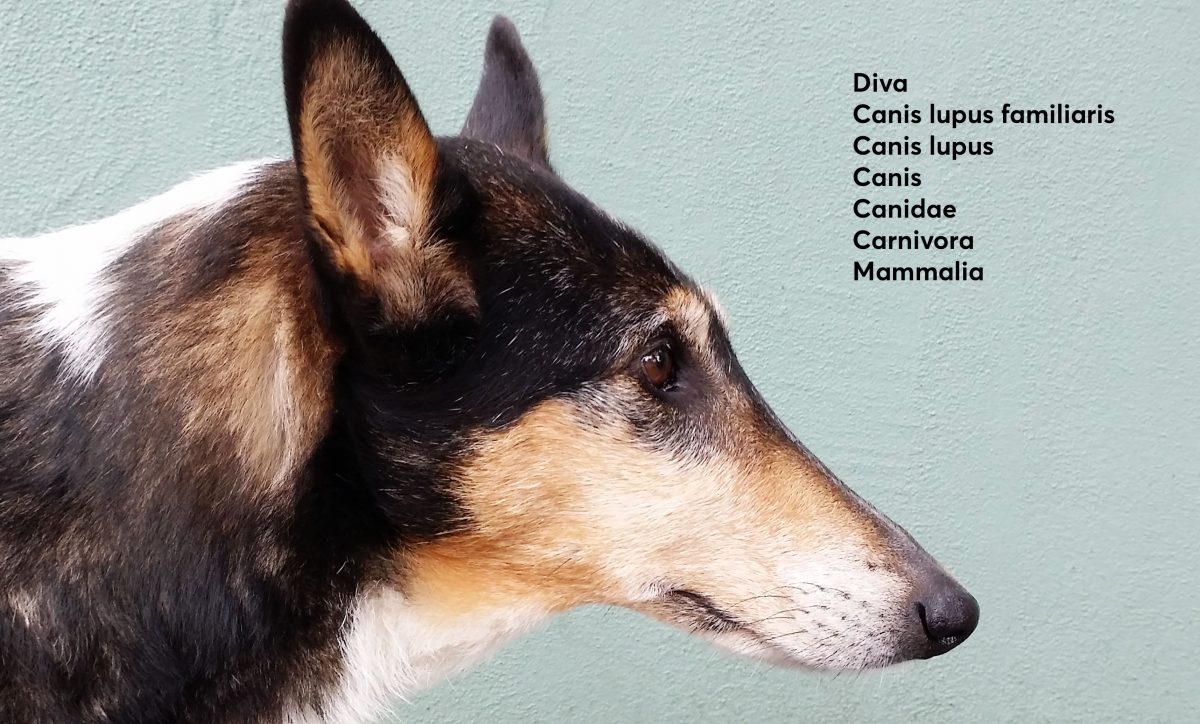Go to visual summary.
We are trapped. And so are our dogs. I have sympathy when a client speaks of their goal to walk with their dog without the need for a leash. Leashes are annoying and are a restriction to personal freedom. But there are good reasons to advise against this, apart from avoiding unpleasant encounters with the local animal control officer, who might just have a really bad day.
Maybe your dog is super friendly but other dogs may have a problem —which can quickly become your problem— in case your dog strolls over to say hello. Even seeing your dog being unrestrained could potentially cause other dogs, and people, serious distress. And, no matter how alert you are and how well your dog listens to you, neither dog nor human are machines. Things can go wrong in the blink of an eye.
So, while there may be situations where taking off that dreaded leash has minimal risk, depending on location, time of day, your dog’s age, physical abilities and temperament, it’s still best to let your dog loose where it’s appropriate and leash up everywhere else.
Give Your Dog Freedom On- and Off-leash
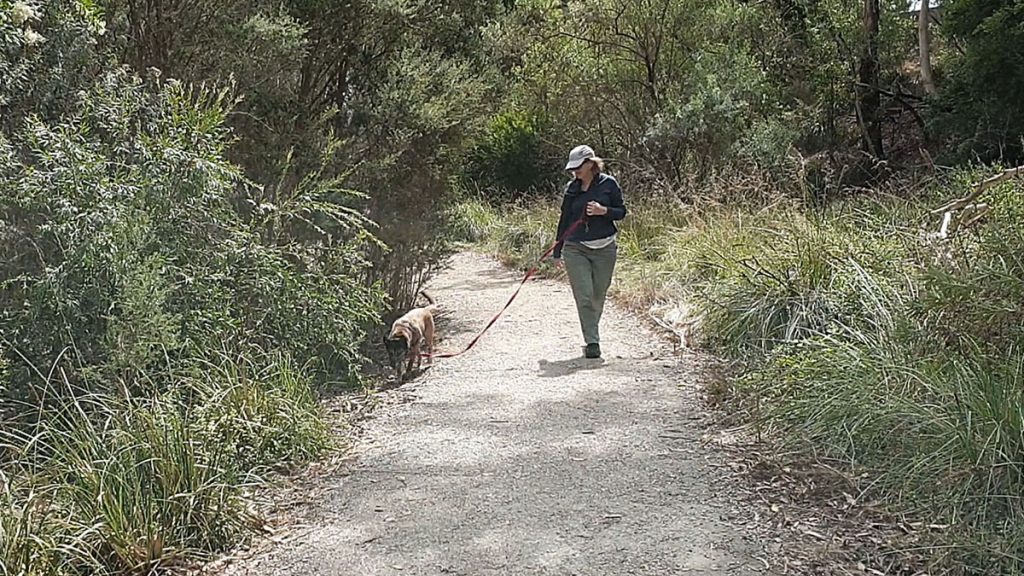
Freedom from restraint is a matter of well-being and mental health, so give your dog plenty of opportunity to frolic freely at dog parks or wherever it is allowed and suitable for your dog.
If you are in an on-leash area with plenty of space, you could consider using a long leash, for example on nature hikes, in parks or in streets with wide sidewalks. Choose a leash of fixed length (3 – 5 metres is easy to handle, but make sure you check your local laws for restrictions of leash length) and stay away from retractable leashes. Always attach long leashes to the back of a comfortable harness to avoid forced somersaults or head jerks which can put an instant painful end to your outdoor adventure.
But doesn’t a longer leash mean “less control”? Yes, you have less physical control over your dog, but that is the point of learning to walk together: Less coercion, more voluntary cooperation. Walking your dog on a tight short leash for “better control” is a vicious cycle. The less freedom your dog has, the more they want to get away. Frustration grows and with it the urge to pull.
Learning to walk on a loose leash means the dog needs to have the freedom to make decisions. A short leash does not give them that freedom.
Instead of ‘Walking Your Dog’, Aim to Walk With Your Dog
It takes some practise to learn how to walk comfortably and without mishaps while being physically attached to another individual. Have you ever participated in a three-legged race? It’s not easy! This description from a website for kids activities hits the nail on the head : “Imagine the teamwork needed to get this one right?!” Yes, indeed.
A dog and human walking in harmony while tied together requires teamwork. Each has to pay attention to the other and make concessions. A still widely practised “training” approach—dogs being yanked into line to adopt the human pace—has nothing to do with harmony. It bulldozes the dog’s needs and nature and it demolishes their joy and their trust in humans. What may emerge from the rubble is hopelessness or hostility.
Instead of being the bully on the team, we can prove how clever we are. We need to figure out how to teach teamwork skills to a dog. Of course, the dog won’t understand the concept of teamwork. The first step in our quest for success is therefore that we accept, and frequently remind ourselves, that the dog isn’t stubborn or wilful or dominant when they pull on leash. They just try to get to wherever they want to go, and they happen to have a human hanging off their neck. What a nuisance.
Choose Equipment That is Safe and Comfortable
Speaking of necks, having anything around them can result in choking, injury and death, so it’s not a bad idea to look for alternatives. It seems there is a product for everything these days, no matter if we need it or not, so a good dose of scepticism is required to avoid useless or even harmful gadgets when you go shopping.
A well-fitted, comfortable body harness is a safe and suitable choice
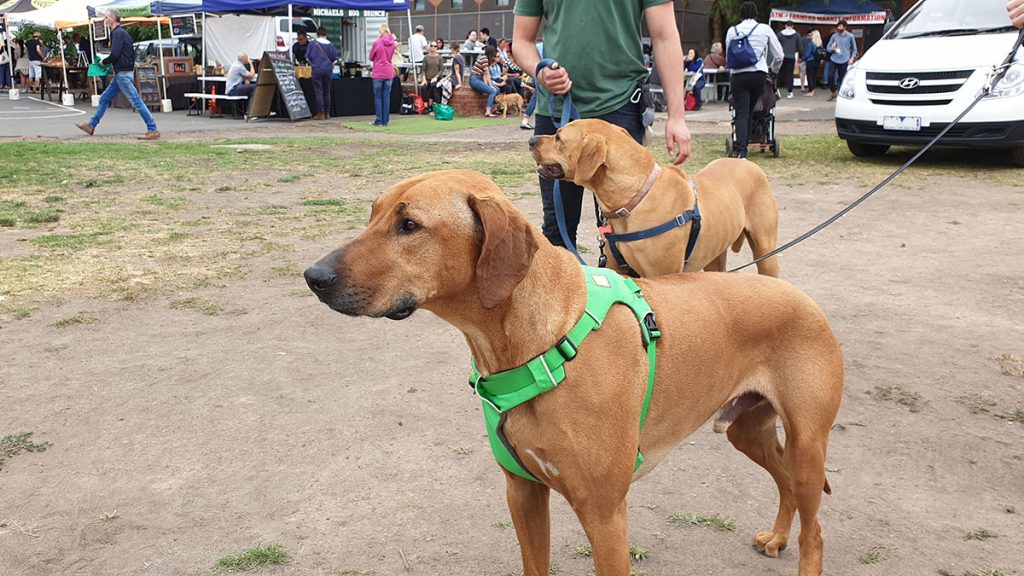
When purchasing and fitting a harness pay attention to freedom of movement and lack of “strangulating bits” which may cause pain or discomfort. If the dog has to walk like a shackled prisoner, because the chest strap hangs at their elbows, or like someone needing an urgent toilet break, because a belly strap pushes into their genital area, that’s not a clever solution. A snug, comfortable fit that doesn’t rub, pinch or squeeze means the dog can happily focus on working with you.
If your dog is like most dogs and generally walks at a faster pace than you, get a front-attachment (or front-clip) harness. You’ll get some immediate relief as the dog’s body is turned as they pull and therefore reduces the pulling force.
Attach a fixed-length leash that is long enough for your dog to sniff and explore freely but short enough to prevent them from getting too far away from you, e.g. 1.6 – 1.8 metres for regular sidewalks.
Head halters can offer a breakthrough in high risk situations
If your dog’s strength and impulsivity puts you at risk, despite a well-fitted front-clip harness, a head halter might just safe you from faceplanting. It can also prevent offence and injury to other people and animals, for example if your dog is super friendly or super aggressive.
Please take the time to condition your dog to the head halter and consider working with a force-free trainer who is experienced with head halters. That way you avoid the risk of causing injury or discomfort to the dog. As with a body harness, you don’t want the dog to be preoccupied with the equipment, so comfort is crucial.
How to Go About Walking With Your Dog
Keep it positive
Teamwork is about making concessions to achieve a goal that works for all. However, don’t bank on your dog’s selflessness or cooperation—or any other perceived human virtue—but embrace the cold hard reality of why animals do the things they do: Because they gain something that is of value to them or they avoid something that is detrimental to them.
I’m not in the business of training an animal with things they want to avoid because that’s how we ended up yanking, choking and shocking our dogs and then having to deal with the emotional and behavioural fallout. I want dogs to be happy.
This is why I recommend training with positive reinforcement. The dog’s reinforcement is nice food and access to other things they desire, and your reinforcement is that you don’t get your arm ripped off. Sounds fair to me.
Know where you are and know where you’re headed
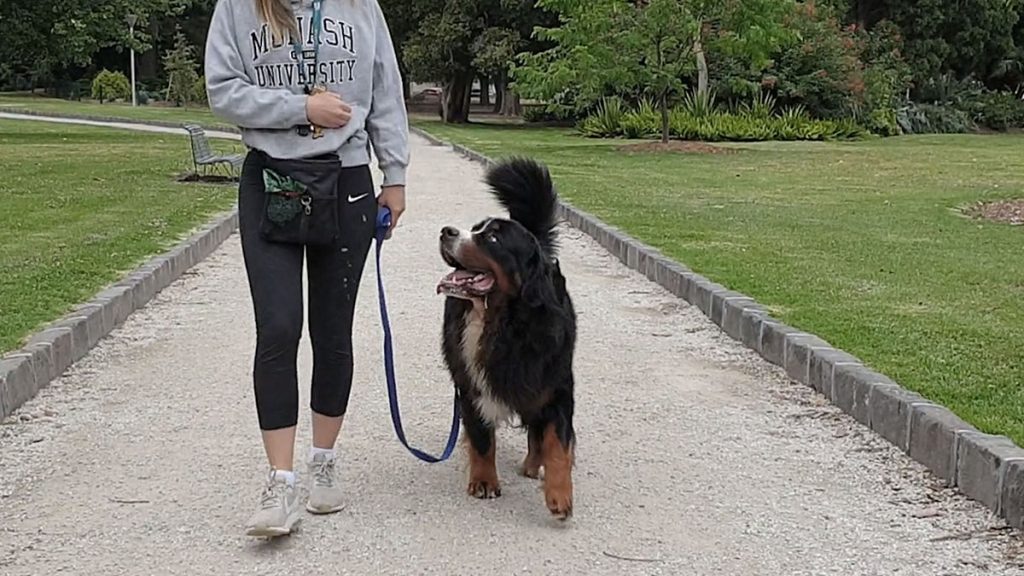
Before you start, take a moment to assess your ultimate goal. If you are hoping to take your dog to the Sunday morning farmers’ market or have them join you for a puppuccino at the local cafe, walking on leash may not be the first goal you have to address. If your dog is overcome with anxiety in busy environments teeming with people, dogs and other things that scare them, deal with this first. And, realise that your dog may never be a candidate for these sorts of activities.
Walking on a loose leash doesn’t need to be any more than what it says. Your dog doesn’t have to walk behind or beside you, they don’t have to walk only left or only right, they most certainly don’t have to heel. Your goal, surely, is to walk with your dog in a way you can both enjoy.
To get there, an assessment of your dog’s and your own skills is in order. How badly does your dog pull and how have you responded to it in the past?
You may have inadvertently reinforced pulling—potentially for months or years—simply by following your dog who is following their nose and dragging you along in the process. Remember, if it works, your dog keeps doing it. If you can train yourself to immediately stop every time your dog rushes ahead, great, but it is rarely a good strategy on its own. Your dog is likely to experience a lot of confusion and frustration unless you practice loose leash walking with positive reinforcement first.
Start with lots of small treats at high frequency and knock out the competition
The ideal incentive to get our dog’s cooperation is food. Quality and quantity matter so be prepared to liberally dish out the good stuff. How frequently you give a treat—the rate of reinforcement—entirely depends on your dog. They set their own pay rate.
Lots of small morsels of something yummy, given at high frequency, can teach your dog in no time that “staying within range (of the leash)” is a worthwhile activity. If the dog seems “distracted” , looking for other things to do instead of focussing on you, your food reinforcement isn’t sufficient. Either you don’t pay often or well enough, your dog isn’t hungry, or you are working in an environment that has too many competing things going on.
Whatever food you use to motivate your dog to walk with you, it has to be high enough in quantity and quality to knock out the competition.
It makes sense then to start with no competition, i.e. just you and your dog at home, and with a bag of treats your dog is willing to work for. And that first exercise of “walking together in close proximity” can even be done without a leash.
Take your time to build your skills and protect your training
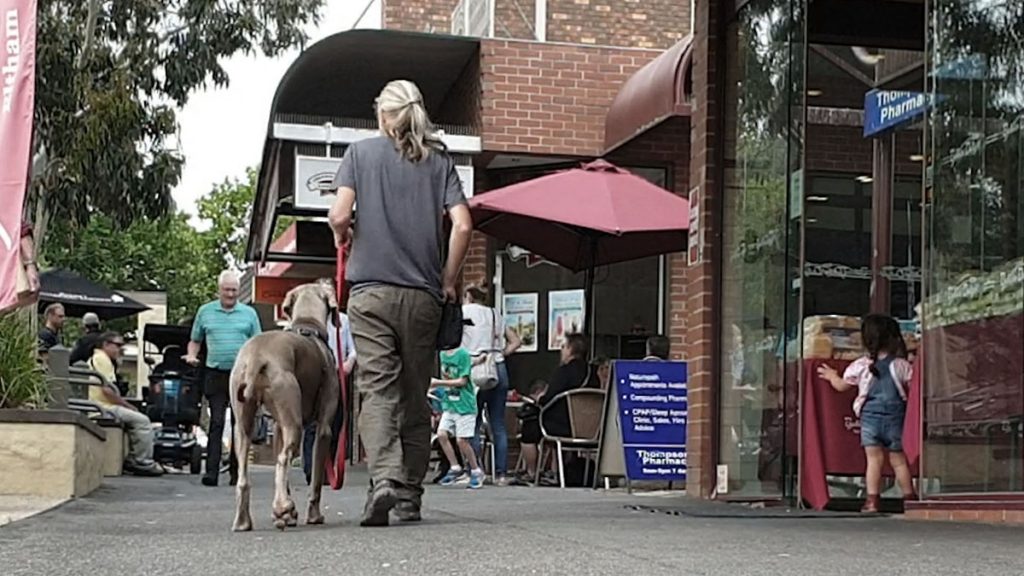
It’s easy to destroy something in an instant but building something requires planning and patience. Good skills take time to develop. If walking your dog on leash is something you are dreading right now—despite using a front-clip harness or even a head halter—it may be better to pack your dog in the car and drive them to the dog park, rather than walking there. If this isn’t an option, spend a little time to drain some of your dog’s energy by playing fetch or tug before you go for a walk.
Celebrate intermediate steps. Practise at home before taking on the big wide world outside where everything seems to be hellbent on throwing you and your dog off course. Once you do venture outside, turn short periods of your on-leash walks into training sessions rather than frustrating your dog and yourself by asking for too much too soon. Train on your way home from the dog park rather than setting your dog the impossible task of strolling towards the dog park. Train in quiet environments first before you run the gauntlet of people, other dogs, garbage trucks, possum poo, cats and whatever else the neighbourhood puts on display.
If you can’t suspend on-leash walks in public until you and your dog are more advanced—i.e. if you can’t get your dog out and about for physical and mental enrichment another way—protect your training with discrimination cues. It will help your dog to distinguish between “training walks” and “free walks”. My go-to cues are mostly verbal cues (“walk”, “slow down”, “back”) for ““training mode” and sometimes a longer leash for “free walks”. Other cues could be attaching the leash to the back of the harness or the collar while you’re training and to use the front attachment of the harness at other times.
Accept your dog’s impulsiveness and stay on top of your own
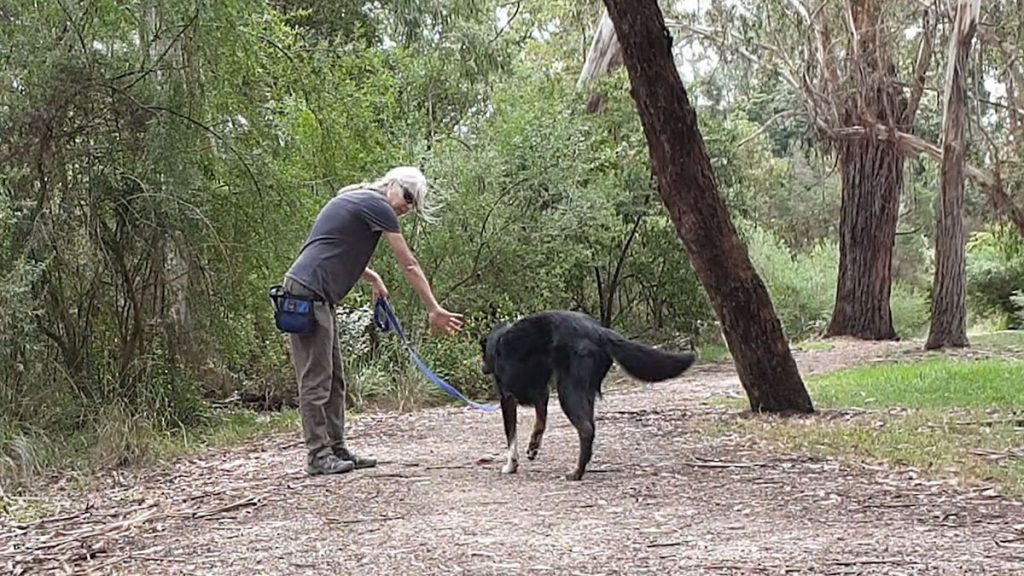
Whenever you feel a pang of anger or frustration, because your arm socket just suffered another violent jerk, stop and breathe. Taking a deep breath may not give you rosy thoughts, but it may buy you just enough time to avoid an impulsive, and potentially damaging, response. Now you can—with great wisdom and aplomb—help your ‘distracted’ team member back on track.
A smart technique to go from angry to astute is to observe your dog: Are they still straining at the end of the leash towards whatever got them so excited, seemingly oblivious of your presence or disapproval? Do they turn and look at you, quizzically and innocently, as if to ask: “Why are we stopping?”
That’s because they are oblivious and innocent. When I say ‘your dog hasn’t got a clue what you want from them’ I’m not doubting their intelligence. They just happen to do things differently from us because they are a different animal. Naturally, they do things that work for them.
Since we are the ones who request that dogs change their behaviour for our benefit, the ball is in our court. How do we marry our slow and even pace with our dog’s “trot & stop rhythm”? We do it by making concessions, such as frequently stopping and letting them sniff, and by making it worth their while to walk at a slower pace in between.
Observe and respond in a timely manner and facilitate success
Pay close attention to your dog so you don’t miss their little successes. You want to quickly give a treat whenever you see your dog make “good” decisions, even tiny ones. For example, your dog may voluntarily slow themselves down, if ever so briefly, before they get to the end of the leash. This may be the first sign that they have made an association between their own pace and the consequence of a tight leash which results in both of you coming to a stop.
Giving timely feedback is essential. Stop if your dog gets to the end of the leash. If there’s time, alert them to it (e.g. “slow down”) whenever they accelerate forward. Reinforce with treats, praise, access to anything of interest and continuation of walking as long as your dog walks at a pace which keeps them in sync with you.
Watch what your dog pays attention to. Rather than waiting until they rush towards a tree, another dog, a person or anything else that needs to be attended to pronto, anticipate it. Use the person, dog or tree as a target and a reinforcer and get your dog to do something for you first. This can be a simple head turn to look at you, taking a step or two back, a brief wait or sit or—finally— to walk on a loose leash towards the target. You can even set up “walking towards a target” as a training exercise at home.
At all times, know what your dog is capable of in the current situation and be ready to reinforce whatever you can get from them. If it’s a 1-second head turn for a sprint to a tree, so be it. It’s a win. Most importantly, recognise when your dog is struggling with other issues and cannot focus on what you are trying to communicate. Anxiety is the biggest culprit and it is easily missed. Sensitivity to your dog’s emotions and how they perceive the world is your and your dog’s road to success.
Enjoy your walk with your dog.
